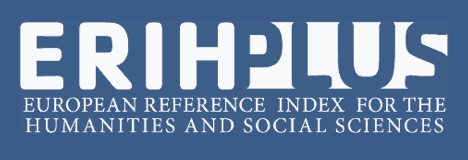GEOCHEMISTRY AND PETROGENESIS OF SILLS IN LAVASANAT REGION, TEHRAN, IRAN
Abstract
The study area is located in Lavasanat region in the east of Tehran Province in the Central Alborz zone. The outcrops in this region are mainly associated with Karaj formation and belong to the upper Eocene to Oligocene periods. These outcrops consist of two intrusions: one in the north and the other in the northeast of Lavasanat. These outcrops are scattered over an area of approximately 337km2. In the study region, there are various intrusive igneous rocks, while numerous intrusive igneous rocks are scattered in the form of sills and dikes. These rocks include a range of rocks from diorite gabbro to diorite, monzonite, and syenite. The weathered colors of these rocks are black, brown and gray. The outcrops of these sills are mainly present in the middle-northern part of the quadrangle geological map of the east of Tehran. In different diagrams of the magma series, the study rocks are classified as alkaline, calc-alkaline, and shoshonite, which may indicate magma contamination. An analysis of the variations of the classical elements and trace elements, the spider plots, and interpretations of these plots confirms the relationship of these rocks with the subduction zone and continental arc. To find the tectonic position of the sills in the study area based on the geochemical diagrams, we selected samples from the within-plate (WIP) and arc zones.
References
ASHRAFI, N.; HASEBE, N.; JAHANGIRI, A. Cooling history and exhumation of the Nepheline Syenites, NW Iran: Constraints from Apatite fission track, Iranian Journal of Earth Sciences, 10(2) p. 109-120, 2018.
BARATIAN, M.; ARIAN, M.A.; YAZDI, A. Petrology and petrogenesis of the Siah Kuh intrusive Massive in the South of Khosh Yeilagh. Amazonia Investiga, 7(7), p. 616-629, 2018.
BOYNTON, W. V. Geochemistry of Rare Earth Elements: Meteorite Studies. In: HENDERSON, P. (Ed.). Rare Earth Element Geochemistry. New York: Elsevier. p. 63-114, 1984.
COX, K. G.; BELL, J. D.; PANKHURST, R. J. The Interpretation of Igneous Rocks. George Allen & Unwin, 1979.
DABIRI, R.; AKBARI-MOGADDAM, M.; GHAFFARI, M. Geochemical evolution and petrogenesis of the eocene Kashmar granitoid rocks, NE Iran: implications for fractional crystallization and crustal contamination processes, Iranian Journal of Earth Sciences, 10(1) p. 68-77, 2018.
DEBON; LE FORT. TIF: P-Q Diagram of NOB plagiogranite. 1983.
HARRIS et al. Hf-Rb-Ta diagram. that shows volcanic arc related to subduction zone for Bisheh area samples. 1986.
IRVINE, T. N.; BARAGAR, W. R. A. A guide to the chemical classification of the common volcanic rocks. Canadian Journal of Earth Sciences, 8, p. 523-548, 1971.
MIDDLEMOST, E. A. K. Naming Material in Magma Hgneous Rock system. Earth-science Reviews, 37, 215-244, 1994.
MULLAR, D.; GROVES, D. I. Potassic igneous rocks and associated gold copper mineralization. Second edition, Springer Verlog, 1997. 242p.
NAZEMI, E.; ARIAN, M. A., JAFARIAN, A.; POURKERMANI, M.; YAZDI, A. Studying The Genesis Of Igneous Rocks In Zarin-Kamar Region (Shahrood, Northeastern Iran) By Rare Earth Elements. Revista Gênero e Direito, 8(4), p. 446-466, 2019. DOI: https://doi.org/10.22478/ufpb.2179-7137.2019v8n4.48442.
PEARCE, J. A.; CANN, J. R. Tectonic setting of basic volcanic rocks determined using trace element analyses. Earth and Planetary Science Latters, 19, p. 290-300, 1973.
PEARCE, J. A.; NORRY M. J. Petrogenetic implications of Ti, Zr, Y and Nb variations in volcanic rocks. Contrib. Mineral. Petrol., 69, p. 33-47, 1979.
PEARCE, J. A. Trace element characteristions of lavas from destructive plate boundaries. In: THORPE, R. S. (Eds). Andesites: Otogenic Andesites and Related Rocks. John Wiley and Sons, p. 252-548, 1982.
RABBET, M.; ALIANI, F.; GHORBANI, M.; SEPAHI, A. A. Petrography and geochemistry of magma rocks in Lavasanat region. The 10th Conference by the Geology Society of Iran, Tarbiat Modares University, 2006.
SAFARI, S. A geological report of the northeast of Tehran, including Afjeh, Hanzak, Ambaj, and Kand villages, 2017.
SUN, S. S.; MCDONOUGH, W. F. Chemical and isotopic systematics of oceanic basalts: implications for mantle composition and processes. In: SAUNDRES, A. D.; NORRY, M. J. (Eds). Magmatism in Ocean Basins. Geological Society of London, Special publication, p. 313-345, 1989.
GHOLIPOUR S.; MORADI, M. A geological analysis and structural analysis of Lavasanatat Region (northeast of Tehran). The First National Conference on Geology, Shiraz, Islamic Azad University of Shiraz, 2011.
VAHDATI, D. F. The 1:100000, quadrangle geological map of east of Tehran. The Geological Survey and Mineral Exploration Organization of Iran, 1995.
WINTER. Magmatic associations: (A) AFM ternary plot (Winter 2001), and (B) Zr/Y vs. Th/Yb (Ross and Bédard 2009). A = alkalis; F = iron, M = magnesium. In B, the dashed field encloses samples deposited under significant hydrothermal influence, 2001.
YAZDI, A. et al. Magmatic Differentiation Evidences And Source Characteristics Using Mineral Chemistry In The Torud Intrusion (Northern Iran). Revista GeoAraguaia, 9(2): 6-21, 2019a.
YAZDI, A. et al. Magmatic interactions as recorded in plagioclase phenocrysts of quaternary volcanics in SE Bam (SE Iran), Iranian Journal of Earth Sciences, 11(3) p. 215-225, 2019b.

This work is licensed under a Creative Commons Attribution-NonCommercial 4.0 International License.
Policy Proposal for Free Access Journals
Authors who publish in this journal agree to the following terms:
a. Authors retain the copyright and grant the journal the right of first publication, with the work simultaneously licensed under the Creative Commons Attribution License which allows the sharing of the work with acknowledgment of the authorship of the work and initial publication in this journal.
b. Authors are authorized to take additional contracts separately, for non-exclusive distribution of the version of the work published in this journal (eg publish in institutional repository or as a book chapter), with acknowledgment of authorship and initial publication in this journal.
c. Authors are allowed and encouraged to publish and distribute their work online (eg in institutional repositories or on their personal page) at any point before or during the editorial process, as this can generate productive changes, as well as increase the impact and The citation of published work (See The Effect of Free Access).





















